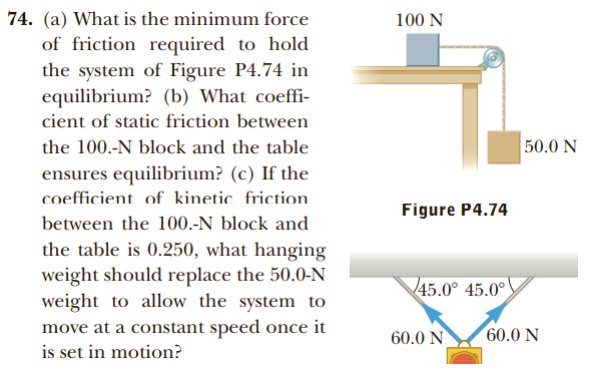(a) What is the minimum force of friction required to hold the system of Figure P4.74 in equilibrium? (b) What coefficient of static friction between the 100. −N block and the table ensures equilibrium? (c) If the coefficient of kinetic friction between the 100.−N block and Figure P4.74 the table is 0.250, what hanging weight should replace the 50.0−N weight to allow the system to move at a constant speed once it is set in motion?
